Search Images
Browse Content (p. 1397)
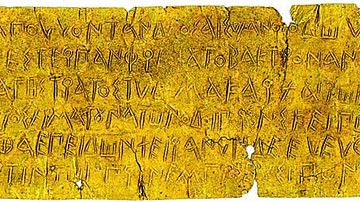
Image
Greek Amulet Invoking Apollo
A beaten gold amulet stamped with a Greek text invoking the god Apollo. The text reads: INVOCATION TO THE GOD PHOEBUS APOLLO WHO RULES OVER MAN, POURING OUT LIBATIONS TO HIM, THAT HE MAY TAKE UP ARMS AND GO THROUGH THE ENEMY'S ARMY TO...

Image
Circe
A 19th century CE painting by John William Waterhouse depicting the sorceress Circe of Homer's Odyssey offering a cup of magic potion to Odysseus. (Oldham Gallery, UK)

Image
Anubis, Egyptian Sarcophagus
A scene from a wooden Egyptian sarcophagus depicting Anubis, the god of mummification and the afterlife. c. 400 BCE.
Allard Pierson Museum, Amsterdam.
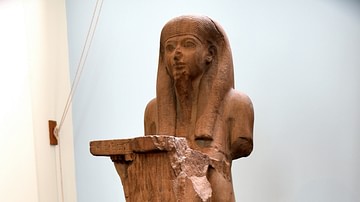
Image
Statue of the Nile God Hapy
Statue of the Nile God Hapy, from Thebes, Karnak, temple of Amun-Ra, Egypt, 22nd Dynasty, reign of Osorkon I, c. 924-889 BCE. The fleshy body symbolizes the Nile's fertility. Hapy holds a table of offerings, from which hang geese, quails...
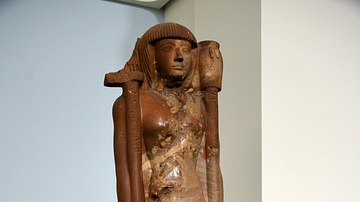
Image
Statue of Prince Khaemwaset
The prince holds two sacred standards. In his left hand is a fetish (sacred emblem) kept in Abydos and linked to Osiris. Atop the other stood figures of Osiris, Isis and Horus. Prayers on the back-pillar invoke Osiris. The text around the...
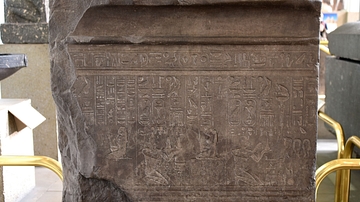
Image
Screen Slab of King Psamtek I
On this side, Psamtek (Psamtik) I kneels making offerings to fearsome-looking deities, including a double-headed bull god and a snake. The majority hold long knives, as they were meant to guard a sacred space located behind this wall. Most...
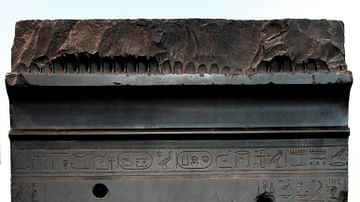
Image
Screen Slab of King Nectanebo I
This slab enclosed a sacred spot in the temple of Atum, a creator god, Heliopolis. King Nectanebo I is shown kneeling and making offerings. In this scene, he presents a loaf of bread. On the other side (now damaged), he appeared in the company...
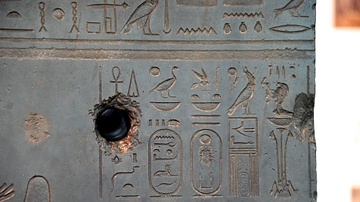
Image
Detail of the Screen Slab of King Nectanebo I
This detail shows the cobra goddess Wadjyt empowering king Nectanebo I, who is represented by his Horus name and cartouches. A pharaoh had five official names; this panel, shows the most important three. The Horus name identifies the king...
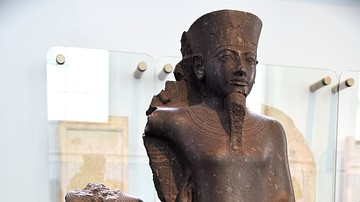
Image
King Horemheb with Amun-Ra
King Horemheb with Amun-Ra, probably from the temple of Amun-Ra at Thebes, Karnak, possibly usurped from Tutankhamun (c. 1336-1327 BCE), 18th Dynasty, c. 1323-1295 BCE. The inscriptions identify the headless king as Horemheb and the larger...
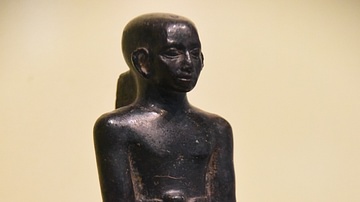
Image
Statue of Nebhepetra
This serpentine statue comes from the lost tomb of Nebhepetra. It shows him in prayer, with arms extended. The long inscriptions on his robe and on the back pillar reveal an extraordinary career as a lector and a guard. 12th Dynasty, probably...